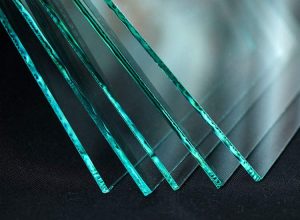
The glass industry has five main sectors that covers different glass products, applications and markets. All these sectors differ from each other in terms of manufacturing process, markets, products and the economics of the sectors but tall these transform raw material into glass by a process of melting. However, the glass industry is based on a lot of aspects such as global production, transformation and distribution, under present market conditions there are some cost and transport restraints that makes it uneconomic flat and container glass to be transported in long distances. Whereas, in case of tableware and reinforces fiberglass, their limits due to higher profit margins, does not apply to such an extent. Approx. 90% or more glass industry products and traded to other industries. The glass industry is significantly dependent on the sector of building construction, car manufacturing and lastly the food and beverage industry. The market for flat glass in year 2019 was approx. 52 million tones that represents the value at the level of primary manufacture of almost $22 billion.
Related Projects:- Glass, Flat Glass, Art Glass, Hollow Glass, Automotive Glass, Optical Glass, glass processing line, Glassware Industry
In India the manufacturing of glass is being done from long back. Indians are known to have gained the knowledge of making glass since time immemorial. The glass industry came into India in the 16th century when items such as bangles, small bottles and flasks were made. By the 17th century, enameled glass was started to be produced at a number of places in Karnataka and Uttar Pradesh.
Demand of Glass Technology from Different Sectors
The market size of glass manufacturing was valued at USD 238.39 billion in 2018 and is recorded to exhibit around 3.8% CAGR from year 2019 to 2026. Increasing glass demand from the packaging and construction industry is expected to provide a positive outlook for industry expansion.
Specialty glass segment is expected to foresee the CAGR of 4.5% over the study timeframe. Increasing application of specialty glass in lens, scientific glassware, electronics and automotive products is motivating the demand glass manufacturing market.
The container glass holds a weighty share with its demand from the packaging industry. The food and beverage industry is also adopting sustainable and hygienic packaging material to lessen carbon footprint. Whereas, the electronic segment will be witnessing a significant growth with consumption of glass to fabricate display panels for monitors, television and portable computers.
In addition, the other application of glass in the electronics sector comprises semiconductor IC packaging, electronic and optical sensors, energy storage devices and cover glasses. The demand of glasses in electronics is directly connected with the demand of electronics.
Related books:- The Complete Technology Book on Fibre Glass, Optical Glass and Reinforced Plastics
In year 2019, the packaging segment accounted for over 35% share in glass manufacturing market volume and will be continuing its dominance over the study timeframe. Asia Pacific region will see over 3% CAGR in the upcoming years. The key driving factors for the glass industry are the continuous shift of production units and R & D facilities. The manufacturers are shifting towards this region due to the availability of economical labor, land and raw materials. Moreover, the encouraging economic conditions and social aspects that are influencing glass consumption plays an important role in the establishment of production units in the region.
Conclusions
NIIR project consultancy services (NPCS) has written a book on “The Complete Book on Glass Technology” that covers all the important aspects of glass technology. The book has been helpful for the entrepreneurs, researchers, technologists along with the professionals. If you are someone who wants to invest in glass technology industry or want to gain knowledge of different aspects such as structure of glass, structure of special melts and glasses, composition of glass, glass formation, crystallization and liquid, optical properties, theoretical strength of glasses, practical strengths of glasses, flaw sources and removal, viscosity of glass forming melts then get your book today for maximum information.
Noo_Art20